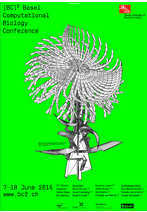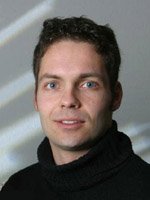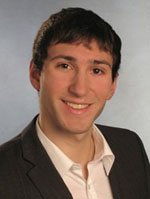T2: Statistics and Numerics for Dynamical Modeling
Organizers:
Clemens Kreutz (University of Freiburg, Germany), Bernhard Steiert (Universitysity of Freiburg, Germany),
Tutorial Summary:
Motivation: A successful mathematical description of cell biological processes based on experimental data requires efficient and reliable numerical methods for parameter estimation as well as a suitable statistical methodology to reconstruct the underlying biochemical reaction networks.
Goal: In this tutorial, statistical and numerical aspects for dynamic modelling in Systems Biology are discussed and the computational implementation is demonstrated. One major focus is the assessment of uncertainties of both, parameters and model predictions, which is efficiently and intuitively judged by the profile likelihood.
In summary, the following aspects are discussed:
· appropriate numerical algorithms for parameter estimation
· judging the quality of experimental data
· model discrimination by the likelihood ratio tests
· identifiability analysis and confidence intervals for estimated parameters
· observability analysis and confidence intervals for model predictions
· selection of informative new experimental conditions
In the tutorial, a published model for JAK-STAT signaling is used to illustrate numerical and statistical methods in MATLAB. A comprehensive software package for quantitative dynamic modelling is introduced. The illustrated methodology has been awarded three times as “Best Performer” in parameter estimation challenges within the Dialogue for Reverse Engineering Assessment and Methods (DREAM) competitions.
Intended Audience: The tutorial is given for scientists with a theoretical background (bioinformatics, physics, theoretical biology, statistics) or for biologists working in the Systems Biology field.
Prerequisites: We will present theoretical aspects of the statistical and numerical methodology but we also show how analyses are performed using the D2D software. We offer the participants to try the software within the tutorial. Real experimental data will be analyzed. Therefore, the participants will be asked for bringing their own computers/notebooks. The MATLAB programming environment should be available on the computers since it is required for the D2D software.
Tutorial speakers:
The tutorial is given by Bernhard Steiert and Clemens Kreutz. They have long-term experience in data-based modelling and published several new statistical approaches for modelling in Systems Biology as well as applications with experimental collaborators.
Bernhard Steiert and Clemens Kreutz participated three times in the DREAM (Dialogue for Reverse Engineering Assessment and Methods) parameter estimation challenges and were awarded as best performing every time.
|
|
Clemens Kreutz (Universitysity of Freiburg, Germany) Short CV Clemens Kreutz: |
|
| Since 2012 | PostDoc in the group of Jens Timmer at the University of Freiburg, Germany. | |
| 2004 – 2012 | PhD thesis in physics in the group of Jens Timmer at the University of Freiburg about “Statistical approaches for Molecular and Systems Biology". | |
| 1997 – 2003 | Physics studies at the University of Freiburg, Germany | |
A more comprehensive CV can be found at the following website: www.fdmold.uni-freiburg.de/~ckreutz
|
|
Bernhard Steiert (Universitysity of Freiburg, Germany) Short CV Bernhard Steiert: |
|
| Since 2012 | Doctoral candidate in physics in the group of Jens Timmer at the University of Freiburg, Germany. | |
| 2013 – 2014 | Visiting PhD student in the group of Peter Sorger at Harvard Medical School, Boston, USA. | |
| 2011 – 2012 | Diploma thesis in physics in the group of Jens Timmer at the University of Freiburg about “Identifiability Analysis and Experimental Design of Non-linear Dynamical Systems”. | |
| 2009 – 2009 | Internship at Porsche Engineering, Bietigheim-Bissingen, Germany. | |
| 2005 – 2012 | Physics studies at the University of Freiburg, Germany. | |
A more comprehensive CV can be found at the following website: www.fdmold.uni-freiburg.de/~steiert
Tutorial Agenda:
Tuesday, June 9, 2015
| 14:00 – 14:45 | Introduction and motivation, some applications of dynamic modelling, numerical and statistical issues. |
| 14:45 – 15:30 | Presentation of the methodology required for establishing dynamic models. Introduction of a computational implementation in the publicly available “Data 2 Dynamics Software”. |
| 15:30 – 16:00 | Coffee break |
| 16:00 – 17:30 | Hands on session:
|
| 17:30 – 17:45 | Discussion and Summary. |








